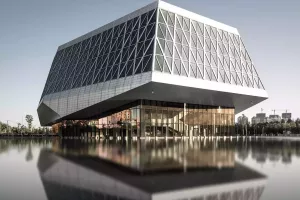When it comes to decorating your house, the choice of colors for paint can significantly impact the overall aesthetic. One popular and practical approach is to opt for a white color scheme.
White processing not only offers a clean and timeless look but also provides durability, making it an excellent long-term investment. Additionally, white walls allow for easy customization and expansion in the future, such as adding a projector or incorporating other design elements.
Another advantage of white walls is that they eliminate the need for curtains, saving you additional expenses. Therefore, if you find yourself undecided about the wall color for your home, adopting a white processing method can simplify the decision-making process and create a simple yet sophisticated atmosphere.
White, as a color, exudes simplicity and purity. In most cases, choosing white paint can yield a clean and orderly visual effect, making it suitable for various interior styles. Whether you prefer a modern minimalist approach or a traditional Chinese aesthetic, white walls can complement and enhance the overall ambiance of your space.
The versatility of white allows it to effortlessly adapt to different design themes and furniture choices, providing a blank canvas for you to personalize your home.
While white offers a timeless appeal, other colors can evoke specific emotions and create unique atmospheres. For instance, blue decor can create a romantic ambiance, making it an ideal choice for bedrooms or children's rooms.
Blue is often associated with serenity and tranquility, providing a calm and soothing environment. With careful color coordination, blue can also be incorporated into other rooms, enhancing the overall comfort and visual appeal of your home.
Considering the orientation of your rooms can further guide your color selection process. East-facing rooms receive sunlight early in the day and can benefit from light warm wall paints. This choice helps create a welcoming and cozy atmosphere, making the space inviting for the morning hours.
South-facing rooms receive ample sunlight throughout the day, and using cool colors can enhance the sense of comfort and relaxation. On the other hand, west-facing rooms benefit from the influence of the sunset and can be adorned with dark cool colors, providing a comfortable and natural ambiance.
It's important to note that different wall paint colors can visually alter the perception of room size and shape. For instance, cooler shades of paint can create an illusion of higher ceilings and make smaller rooms appear more spacious.
Additionally, color choices can manipulate the perceived distance between walls, affecting the overall perception of the room's layout. Thus, selecting the right color palette can effectively transform the appearance of your house, maximizing its potential and creating a harmonious environment.
When planning the decoration process, it is advisable to work from top to bottom, starting with the ceiling and walls. A common practice is to paint the ceiling and walls in white or light-colored paint to provide a sense of brightness and openness.
Contrastingly, darker colors can be used for skirting boards, creating a sense of depth and stability. This top-down approach ensures a balanced visual effect throughout the room.
By avoiding the opposite scenario of dark ceilings and light walls, which can create a visually unbalanced and overwhelming atmosphere, you can achieve a harmonious and aesthetically pleasing result.
Furthermore, the purpose of each room plays a crucial role in determining the desired effect. For example, the living room should emanate a bright, relaxed, and comfortable ambiance. Choosing light and soft colors can help achieve this atmosphere.
On the other hand, darker and richer colors can be employed in the dining room to create an intimate and sophisticated setting. The kitchen, being a space associated with food preparation and warmth, benefits from lighter and brighter colors, promoting a cheerful and inviting environment.
When it comes to hallways and foyers, these areas serve as transitional spaces, allowing for more adventurous and bold color choices.


